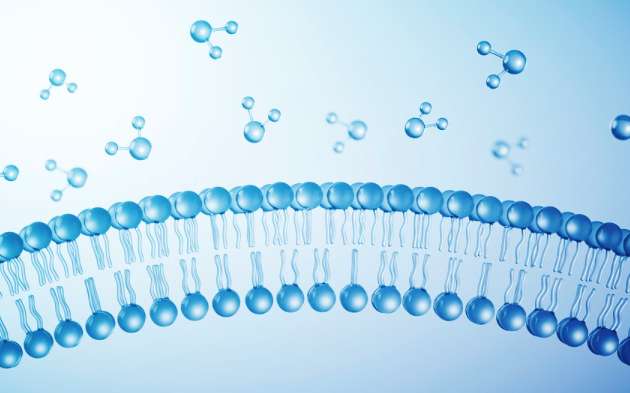Thorough testing of the absorption, distribution, metabolism, and excretion (ADME) properties of a compound has significant downstream effects on the potential success of a drug. Here’s how early ADME screening in particular helps propel you to a successful IND submission.
Measuring the ADME properties of a drug helps drug developers optimize pharmacokinetic properties at the discovery stage, such as bioavailability, metabolic stability, potential interactions with other drugs, and potential toxicity.
Preliminary in vitro ADME studies are not designed for regulatory submission. Instead, they are most often used to stack rank compounds for further characterization; therefore, early ADME screening is an important tool in the drug discovery process.
What Is Early ADME Screening?
Any ADME study before IND-enabling testing – that is, before you have selected your preclinical candidate (PCC) – can be considered early ADME screening.
Development Stage | Purpose | Assay Types |
Hit to lead | Screen chemical structure classes to provide 1 - 3 lead compounds with a reasonably diverse structural series | Solubility Pka Log P/D Plasma protein binding Hepatic microsomal stability Permeability, etc. |
Lead optimization | Evaluate and improve the drug properties of lead compounds and help to obtain preclinical drug candidates with the best drug-like properties | Solubility Permeability Substrate or inhibitor screening of transporters Plasma protein binding Blood-to-plasma partition ratio Multiple species metabolic stability Inhibition of CYP enzymes and transporters Time-dependent inhibition of CYP enzymes CYP reaction phenotyping, etc. |
Preclinical candidate (PCC) | Continue to improve the drug properties | Solubility Permeability Substrate or inhibitor screening of transporters Plasma protein binding Blood-to-plasma partition ratio Multiple species metabolic stability Inhibition of CYP enzymes and transporters Time-dependent inhibition of CYP enzymes CYP reaction phenotyping, etc. |
Investigational New Drug (IND) application | As required by new drug registration authorities, perform preclinical ADME evaluation. These parameters play an essential role in the species and dose selection of initial toxicity studies and complement toxicokinetic data. | In addition to the above assays, CYP induction, identification of reactive metabolites, and other studies are needed in this stage. |
Table 1. In vitro ADME study objectives and main assay types at various stages of drug development
As Table 1 above outlines, screening occurs during hit to lead and lead optimization: two important stages of drug discovery.
Hit to Lead
Drug discovery begins with a process called high throughput screening, in which researchers assess activity against a specific target to produce compounds known as “hits.” In the hit to lead stage, there may be hits from different chemical structures: New chemical entities (NCE) that could become your PCC.
The drug discovery team may use early ADME screening to differentiate these hit series and select the more promising ones to further pursue. Screening assays typically start by focusing on properties like microsomal stability, which informs how well the drug stays in the body to do what it needs to do. Solubility, lipophilicity, and permeability are also important early properties to observe.
Lead Optimization
The next step – lead optimization – requires more comprehensive ADME screening. From here, you will see some in vivo ADME assays come into play to examine the in vitro-in vivo correlations. In vitro models are useful tools and can be used to predict in vivo behavior; however, the actual pharmacokinetic behavior ultimately comes from in vivo studies. When there’s enough screening data from both in vitro and in vivo, you can start building in vitro-in vivo correlation (IVIVC).
Phase | Assay | Study Design |
In Vitro ADME Phase I | MMS | Liver Microsome Stability (CD-1 mouse, SD rat and Human) |
PPB | Plasma protein binding - HTD (CD-1 mouse, SD rat and Human) | |
MDR1 | Bidirectional Permeability in NIH MDR1-MDCK Cells | |
DDIM | CYP inhibition for 5-in-1 cocktail substrates | |
KS | Aqueous solubility (Kinetic) | |
Log D | Log D measurement at pH 7.4 | |
In Vitro ADME Phase II (Option) | HMS | Stability in hepatocytes (CD-1 mouse, SD rat and Human) |
Met ID | In vitro Met ID in liver microsomes (SD rat, Human, Beagle dog, Cyno monkey and CD-1 mouse) | |
Met ID | In vitro Met ID in hepatocytes (SD rat, Human, Beagle dog, Cyno monkey and CD-1 mouse) | |
PLS | Stability in plasma (CD-1 mouse, SD rat and Human) | |
Caco-2 | Bidirectional permeability in Caco-2 Cells | |
Caco-2 | P-gP substrate assessment in Caco-2 monolayer | |
TDI | CYP time dependent inhibition (IC50 shift, 5 CYPs, 6 substrates) | |
pKa | pKa measurement (spectrometric method) | |
Rodent PK | Mouse PK study | • 6 male CD-1/C57BL/6 mice, n=3/route |
Rat PK study (option) | • 6 male SD rats, n=3/route |
Table 2. An example study design for early screening for general disease targets.
How Does Early ADME Screening Boost IND Submissions?
Early ADME screening assays are important tools to help drug developers select the suitable candidates for further development. If used properly, early ADME screening can help you improve your IND package in a few important ways.
#1. Select Lead Compounds with Favorable PK Properties
You can’t submit an IND without a strong candidate. Early ADME screening ensures you get to that candidate.
The discovery process is long and nuanced, and drug development as a whole is timely and expensive. Anything you can do in the earlier stages to learn more about your potential compound will only help you get to your PCC faster.
In drug discovery, it’s important to collaborate with your DMPK testing team and chemistry team. Screening is a continuous process of analyzing data, designing compounds, testing again, modifying compounds, and so on.
The most successful drug discovery efforts are agile. The faster you get through drug discovery (without cutting corners), the faster you can get to your IND. Because of this, it’s important to work with a testing partner that has availability, so you can request assays every week and get a fast turnaround on data.
#2. Improves Human PK Prediction
The data obtained from early ADME studies give you a better picture of potential safety concerns related to metabolism and drug-drug interactions, helping you determine optimal administration routes, formulations, animal models, and dosage. This allows for better prediction and correlation of drug behavior in humans, enhancing the efficiency and success of subsequent studies.
While early ADME screening assays aren’t part of the IND package, the data they provide are meaningful. Once you land on your PCC, you will have a better idea of the IND-enabling studies you need to conduct thanks to the data from early ADME testing.
#3. Reduces IND Submission Risk
In the 1990s, almost half of failed drug candidates failed due to unacceptable ADME properties. Since then, earlier ADME assessments have helped R&D teams exclude undesirable compounds sooner, so they can focus on promising compounds for subsequent development.
As mentioned, early ADME studies provide a better picture of potential safety concerns related to DDI. For example, a strong presence of inhibition enzyme can cause serious DDI concerns. If you get to the IND stage and find out your PCC has problematic inhibition enzymes, you will have to scrap the compound and start again – extending your timelines, stretching your budget, and hurting your chances of success.
Thorough early ADME screening will save you time and money from moving forward with a compound that has unnecessary risk.
Conclusion
Early ADME screening is an important stage of drug development. It helps researchers:
Optimize the properties of drug-like molecules.
Define potency against a target.
Optimize PK parameters.
Reduce the risk of drug-drug interactions.
While not explicitly included in the IND submission, these assays are on the critical path and should not be overlooked.
Committed to accelerating drug discovery and development, we offer a full range of discovery screening, preclinical development, clinical drug metabolism, and pharmacokinetic (DMPK) platforms and services. With research facilities in the United States (New Jersey) and China (Shanghai, Suzhou, Nanjing, and Nantong), 1,000+ scientists, and over fifteen years of experience in Investigational New Drug (IND) application, our DMPK team at WuXi AppTec are serving 1,500+ global clients, and have successfully supported 1,200+ IND applications.
Talk to a WuXi AppTec expert today to get the support you need to achieve your drug development goals.
Stay Connected
Keep up with the latest news and insights.












